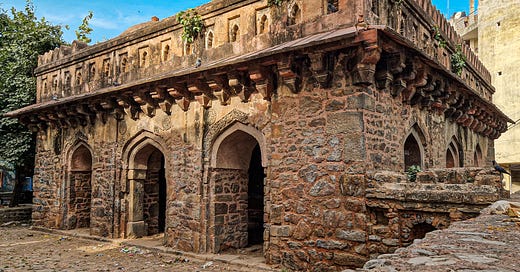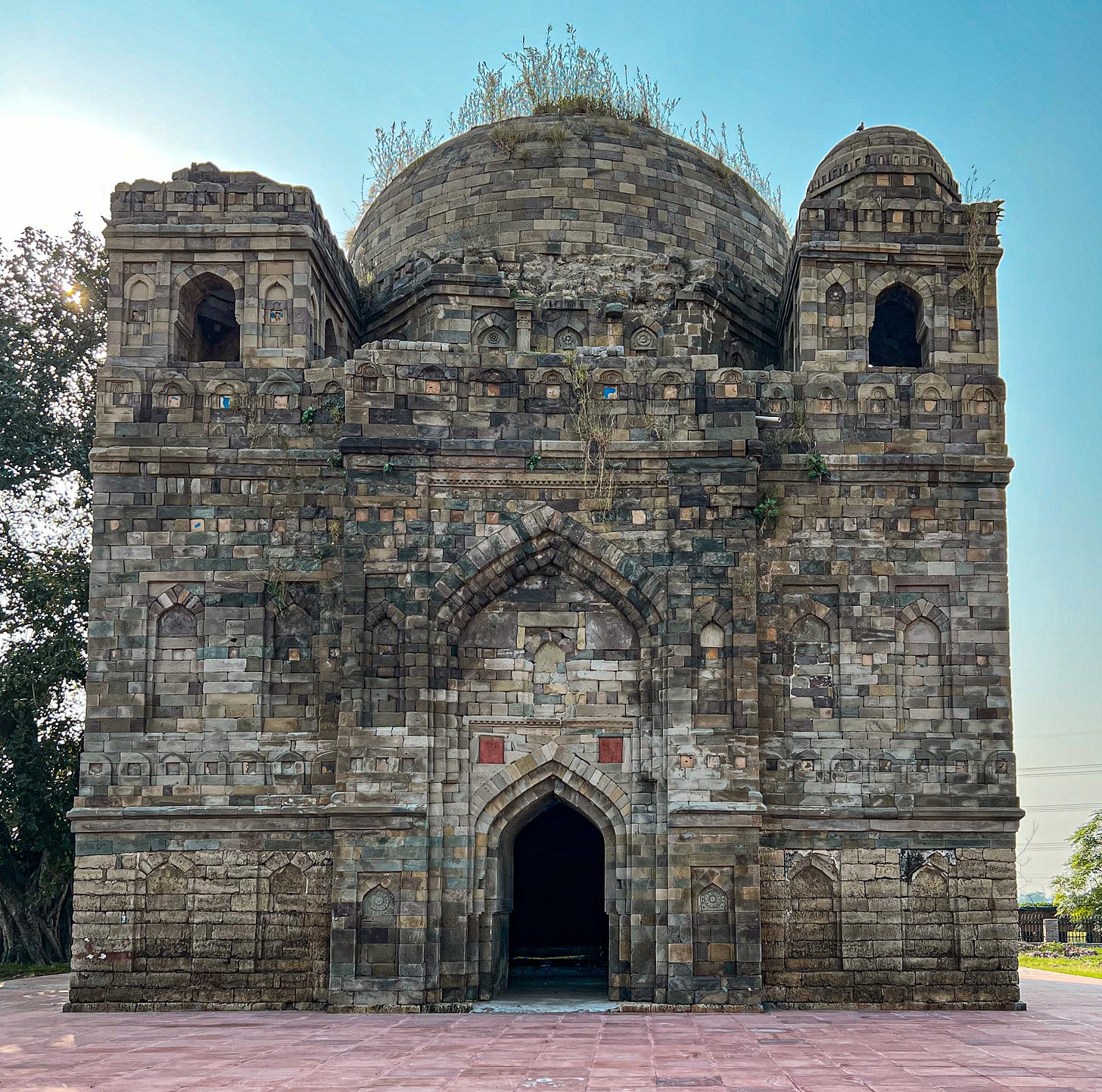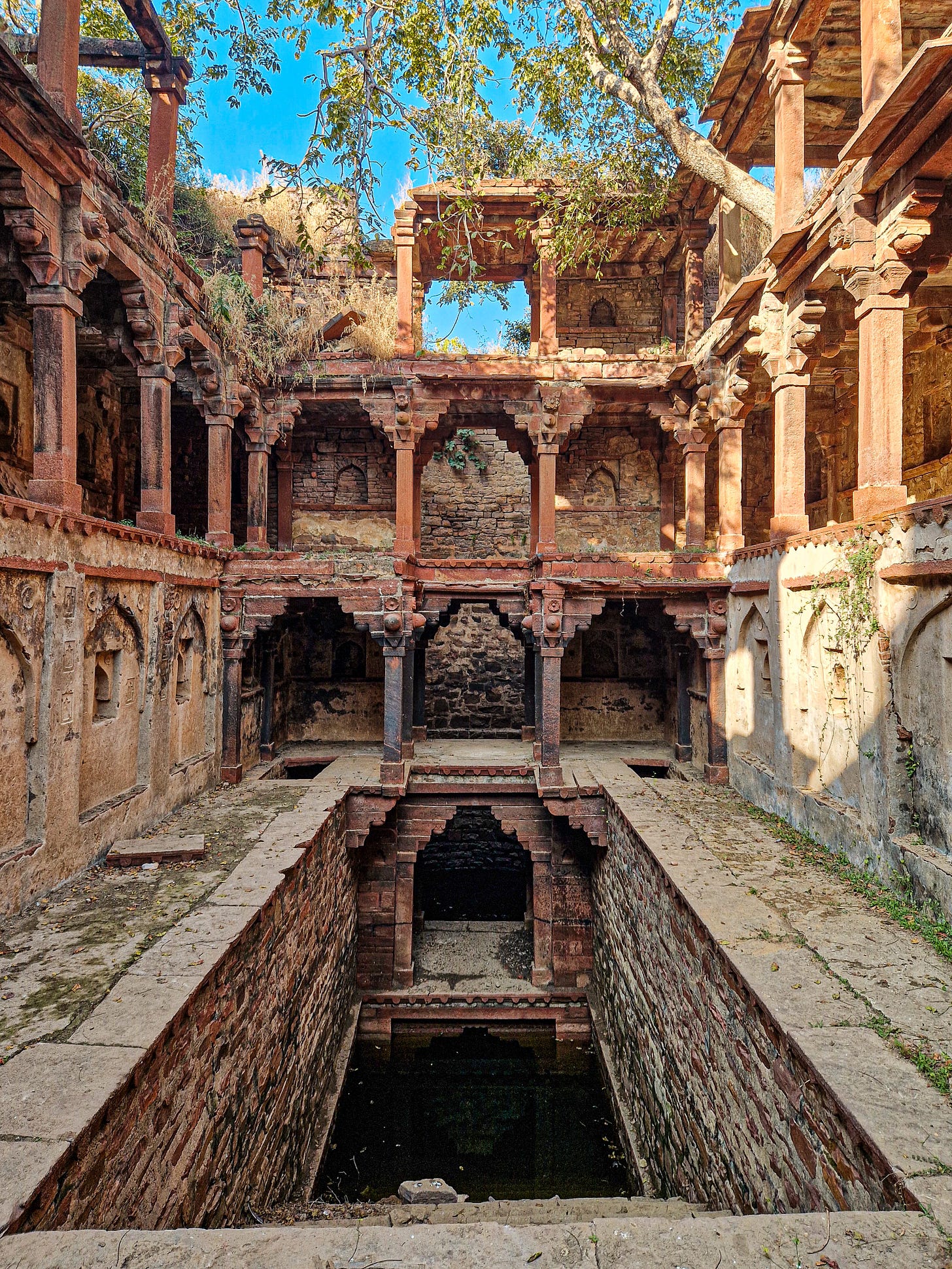The Horse Trader Sultan
Almost everyone who visits Delhi goes to Lodi Gardens. But do you actually know anything about who built it?
Our story begins with Bahlol Lodi, an itinerant Afghan horse trader who found the favour of the Seyyed Sultans of 15th century Delhi. As payment for selling the Sultan some of the finest horses, Bahlol was given a pargana of land, and granted the title of Amir. So began his unstoppable rise.
When the Sultan called his amir's into battle against Malwa, Bahlol organised a calvary unit to march with the king. Soon the horse trader had 20,000 calvary at his command.
Bahlol was invited to the throne after Alam shah Sayyid vacated the throne. So began 70 years of Lodi dynasty rule over North India.
Sikander Lodi
On 16 April 1489, Bahlul Lodi died.
His son Sikander, born to a Hindu wife of Bahlul's had been in the care of nobleman, Khan-i-Khanan Farmuli, and when Bahlul died, it was Khan-i-Khanan who helped secure the young Sikander's path to the throne.
Sikander’s new kingdom extended from Sirhind in Punjab all the way east to Kalsi and south to the borders of Gwalior. The tomb of his sister can actually be found outside modern Chandigarh.
Sikander would prove to be an intolerant man, constantly trying to prove his islamic credentials to push away criticism of his half-Hindu parentage. He is said to have ransacked ‘idol temples’ in Mathura, Sambhal and Dholpur, and was generally a bit of a dick to his hindu subjects.
A few years after taking the throne, Sikander was marching on Bayana - the massive fortress south of present-day Agra.
The Jalwanis of Bayana soon submitted to him, but according to the Tarikh-i-Khan Jahani, whilst Sikander "was engaged in fishing" on the Jamuna after his victory, the Jalwanis turned on him.
Sikander thus began beseiging Bayana. The fort was basically impreganble, but its key weakness was its very iffy water supply. In 1492 Lodi finally won. He then gave the fort to a new governor called Khan-i-Khanan Farmuli.
Khan-i-Khanan's Baoli
Khan-i-Khanan's baoli survives in the fort, notably with a dual Persian and Sanskrit inscription, and it remains one of the great monuments to survive from the Lodi era.
The stepwell is one of the most beautiful structures in the whole Bayana fort. It was completed in 1496 and it's bilingual Sanskrit-persian inscription (which now seems to have been nicked) gives a unique glimpse into the Hindu popution.
Keep reading with a 7-day free trial
Subscribe to Travels of Samwise to keep reading this post and get 7 days of free access to the full post archives.






